Pete Sutton's Blog, page 26
March 8, 2016
Review - The sign in the Moonlight by David Tallerman
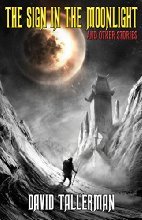
I received this book in return for a review.
David Tallerman's short fiction is commonly seen in all the best genre magazines and anthologies, which tells you that it is well-crafted. This collection showcases a short story writer of uncommon skill.
In here you'll find stories that brush the unknown with fingers outstretched, that send shivers down the spine, that paint with a palette of darkness. Tallerman is obviously influenced by past writers of the macabre in some of these tales but the range is much broader than that. Be he writing in the style of Victorian ghost tale, pulp era horror or modern his voice comes through.
Tales of mountain explorers, barrow dwellers, Santa Things, freezing deserts, soulful scarecrows and, of course, ghosts fill these pages and you'd be hard pressed to find an off note in the symphony of shadows. It is possible to find favourites though. I was especially taken with The facts in the case of Algernon Whisper's Karma a very clever tale of reincarnation. Also The war of the rats, written especially for this volume, was an utterly compelling tale of World War 1. Another favourite was the charmingly disturbing tale of My friend Fishfingerby Daisy, Aged 7.
I wouldn't hesitate to recommend this work to fans of Lovecraft, MR James, Algernon Blackwood et al as Tallerman can take his place amongst those, and other, master craftsmen of the dark tale.
Published on March 08, 2016 00:18
March 7, 2016
The Refuge Collection
What is the Refuge Collection? It's a collaboratively created world, six volumes of stories by established and up and coming writers.
You can read all about it at the website here
Heaven to some, hell to others
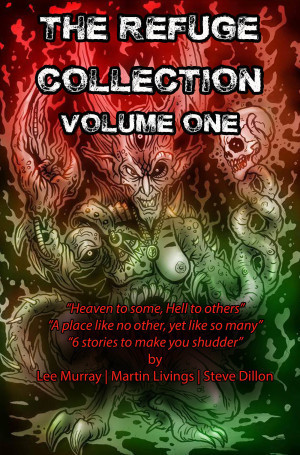
100% of the proceeds go to charities that help refugees
Yours truly has written one of the stories - and the Bristol Book Blog is catching up with other writers in the series over the next few weeks.
The blog first caught up with Steve Dillon the man who started Refuge and asked him a few questions:
Can you tell us a bit about The Refuge Collection - how did it come about?
I could write a book by way of reply and much of the answers to all your questions will be published in 'The Refuge Companion'. But in a nutshell, I was compelled to do two things- a) Write fiction- I couldn't stop: the hornets were buzzing in my head demanding to be released and b) I was swarmed by compassion for the refugee situation, the real life horror story that's happening all around us. These two things just came together with a click, like the unlocking of a complex puzzle box, opening the doors to Refuge.
How did you gather the writers?
Social media and my contacts, mostly through FaceBook. I've been working to promote the horror community in Australia for the past 4 years, so I know a lot of talented writers, artists and other gifted folk. There's a lot of compassion and generosity in the world of horror.
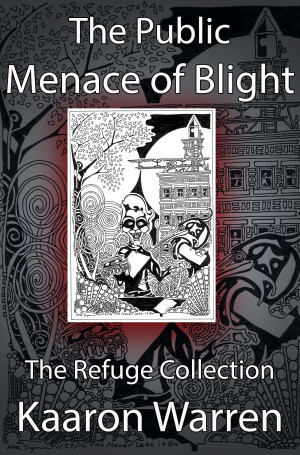
How has the collection grown?
There are 3 collections. The first is the people- we have over 30 talented people involved now, including Ramsey Campbell. Just knowing that Ramsey was supporting me in this project gave me a lot of courage to build Refuge. The second collection is the tales from Refuge. We've published 18 (3 books of 6 tales) and we're halfway through. I'm currently editing about 8 more, and have at least 3 more of my own which the hornets demand I tell... The third collection is money. Funds for the charities we support. They're the ones doing the hard yards, really building Refuge for people who really need it. At the moment these are: http://www.sanctuaryaustraliafoundation.org.au/ andhttp://www.refugee-action.org.uk/
Can you give us a teaser for the next collection volume?
The next 3 lots of 6 tales will continue to deliver an eclectic melting pot of tales and diverse writing styles as writers bring different moral values and cultural mythologies to the books. Just as people in Refuge bring their gods and superstitions, the tales will reflect that. We'll also reveal more of the insidious plot that weaves its way between the tales, spilling Refuge's secrets-and sewage-onto its streets. I need to conclude The Empath and The Priest's tales, as they're our narrators and story-tellers, and these two tales will have converged by Volume 6. There are hints throughout the stories about what Refuge's fate might be, but that might yet be influenced by what the other writers bring to the writing desk.
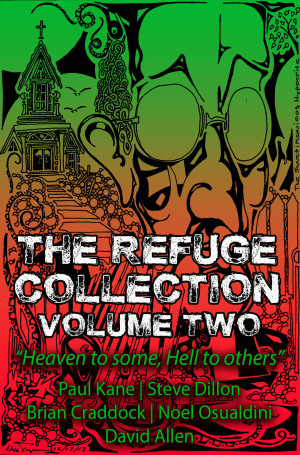
What did you learn about writing by curating this collection?
I have learnt more than I ever could have if I hadn't done this, partly through the discipline and practice itself, but mostly through the excellent guidance and feedback I've had from my editors and reviewers. May Refuge always leave its gates open for them! I have to give credit to everyone who's provided feedback, but in particular to two of the writers, Lee Murray and Noel Osualdini for their diligence, tenacity and bravery in helping me shape my tales into something half-decent.
What's been the greatest challenge in putting this together?
I thought writing was hard, and it can be. But editing and reviewing is much harder, especially as series editor, because continuity is a huge challenge, especially when several people are writing at the same time. There's been times when I've had to delay publishing collections and individual tales while waiting for a single story to be completed, just to make sure the timelines, events and plot elements don't clash. For example, once a character has been killed off, if another writer wants to re-use that character, there has to be strict sequencing, or creative plot narrative to ensure continuity. The other challenge is having to say 'no thank you' to a couple of submissions that just didn't fit the Refuge Collection.
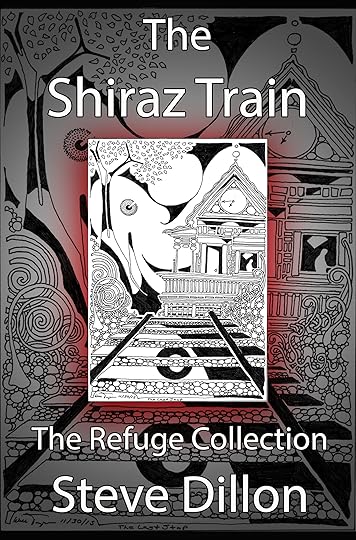
What do you think makes a good short story?
A good short story has to be good. And short. Whatever that means to the reader. That probably sounds facetious, but it's the best I can come up with :P My preference, if that was the meaning of the question, is for stories that contain a supernatural or psychological element, with a degree of credibility, which reflects the horrors of humanity and which haunts me after I've finished reading it. It's no secret I'm a fan of Clive Barker, Ramsey Campbell, Lovecraft, M.R. James and a raft of others. I'm not saying that Stephen King isn't a good story-writer, but I've only ever completed one of his novels: Needful Things. My wife has read most of his work and never reads any of the authors I read. Isn't diversity wonderful?
In one sentence what is your best piece of advice for new writers?
"Write first-passionately-and think about it later."
Many thanks to Steve - we'll also be chatting with other writers in the series and getting their takes on The Refuge Collection. Please do go and check out the website and buy copies of the books - after all it is for a VERY good cause.
You can read all about it at the website here
Heaven to some, hell to others

100% of the proceeds go to charities that help refugees
Yours truly has written one of the stories - and the Bristol Book Blog is catching up with other writers in the series over the next few weeks.
The blog first caught up with Steve Dillon the man who started Refuge and asked him a few questions:
Can you tell us a bit about The Refuge Collection - how did it come about?
I could write a book by way of reply and much of the answers to all your questions will be published in 'The Refuge Companion'. But in a nutshell, I was compelled to do two things- a) Write fiction- I couldn't stop: the hornets were buzzing in my head demanding to be released and b) I was swarmed by compassion for the refugee situation, the real life horror story that's happening all around us. These two things just came together with a click, like the unlocking of a complex puzzle box, opening the doors to Refuge.
How did you gather the writers?
Social media and my contacts, mostly through FaceBook. I've been working to promote the horror community in Australia for the past 4 years, so I know a lot of talented writers, artists and other gifted folk. There's a lot of compassion and generosity in the world of horror.

How has the collection grown?
There are 3 collections. The first is the people- we have over 30 talented people involved now, including Ramsey Campbell. Just knowing that Ramsey was supporting me in this project gave me a lot of courage to build Refuge. The second collection is the tales from Refuge. We've published 18 (3 books of 6 tales) and we're halfway through. I'm currently editing about 8 more, and have at least 3 more of my own which the hornets demand I tell... The third collection is money. Funds for the charities we support. They're the ones doing the hard yards, really building Refuge for people who really need it. At the moment these are: http://www.sanctuaryaustraliafoundation.org.au/ andhttp://www.refugee-action.org.uk/
Can you give us a teaser for the next collection volume?
The next 3 lots of 6 tales will continue to deliver an eclectic melting pot of tales and diverse writing styles as writers bring different moral values and cultural mythologies to the books. Just as people in Refuge bring their gods and superstitions, the tales will reflect that. We'll also reveal more of the insidious plot that weaves its way between the tales, spilling Refuge's secrets-and sewage-onto its streets. I need to conclude The Empath and The Priest's tales, as they're our narrators and story-tellers, and these two tales will have converged by Volume 6. There are hints throughout the stories about what Refuge's fate might be, but that might yet be influenced by what the other writers bring to the writing desk.

What did you learn about writing by curating this collection?
I have learnt more than I ever could have if I hadn't done this, partly through the discipline and practice itself, but mostly through the excellent guidance and feedback I've had from my editors and reviewers. May Refuge always leave its gates open for them! I have to give credit to everyone who's provided feedback, but in particular to two of the writers, Lee Murray and Noel Osualdini for their diligence, tenacity and bravery in helping me shape my tales into something half-decent.
What's been the greatest challenge in putting this together?
I thought writing was hard, and it can be. But editing and reviewing is much harder, especially as series editor, because continuity is a huge challenge, especially when several people are writing at the same time. There's been times when I've had to delay publishing collections and individual tales while waiting for a single story to be completed, just to make sure the timelines, events and plot elements don't clash. For example, once a character has been killed off, if another writer wants to re-use that character, there has to be strict sequencing, or creative plot narrative to ensure continuity. The other challenge is having to say 'no thank you' to a couple of submissions that just didn't fit the Refuge Collection.

What do you think makes a good short story?
A good short story has to be good. And short. Whatever that means to the reader. That probably sounds facetious, but it's the best I can come up with :P My preference, if that was the meaning of the question, is for stories that contain a supernatural or psychological element, with a degree of credibility, which reflects the horrors of humanity and which haunts me after I've finished reading it. It's no secret I'm a fan of Clive Barker, Ramsey Campbell, Lovecraft, M.R. James and a raft of others. I'm not saying that Stephen King isn't a good story-writer, but I've only ever completed one of his novels: Needful Things. My wife has read most of his work and never reads any of the authors I read. Isn't diversity wonderful?
In one sentence what is your best piece of advice for new writers?
"Write first-passionately-and think about it later."
Many thanks to Steve - we'll also be chatting with other writers in the series and getting their takes on The Refuge Collection. Please do go and check out the website and buy copies of the books - after all it is for a VERY good cause.
Published on March 07, 2016 01:30
Guest Post by Sanjida Kay
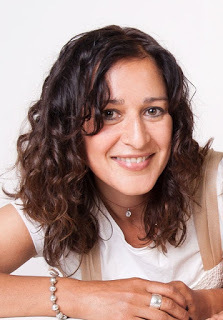
Sanjida Kay lives in Bristol with her husband and daughter. Bone by Bone, published by Corvus Books, is her first psychological thriller. Sanjida has dropped by the blog to talk about sense of place in a novel. She will be discussing psychological thrillers at the fantastic Novel Nights on March 17th. If you're in Bristol and free on that night you should check it out.
Website: www.sanjida.co.uk
www.facebook.com/SanjidaKayAuthor
Twitter: Sanjida Kay
Instagram: @Sanjida.Kay

Bone by Bone by Sanjida Kay published by Corvus Books 3 March 2016
Selected by Jake Kerridge, Sunday Express , as a Thriller you won’t want to miss in 2016
How far would you go to protect your child?
When her daughter is bullied, Laura makes a terrible mistake…
Laura is making a fresh start. Recently divorced and relocated to Bristol, she's carving a new life for herself and her nine-year-old daughter, Autumn. But things aren't going as well as she'd hoped. Autumn's sweet nature and artistic bent are making her a target for bullies.
When Autumn fails to return home from school one day Laura goes looking for her and finds a crowd of older children taunting her little girl. In the heat of the moment, Laura is overcome with rage and makes one terrible mistake. A mistake that will have devastating consequences for her and her daughter...

…a rustling green tree, with a west wind blowing, and bright white clouds flitting rapidly above; and not only larks, but throstles, and blackbirds, and linnets, and cuckoos pouring out music on every side, and the moors seen at a distance, broken into cool dusky dells… Wuthering Heights by Emily Brontë
Sense of place is hugely important in fiction, but in some novels, the landscape is as much a part of the plot as the characters. Wuthering Heights is synonymous with the Yorkshire moors. It’s hard to imagine The Beach by Alex Garland not set on a Thai beach. The God of Small Things by Arundhati Roy is unthinkable without Kerala, and where would those modern-day cowboys be if they were not roaming the great American West in Cormac McCarthy’s Border Trilogy?
I’ve always been inspired by landscape and the natural world and it features heavily in my fiction. When I came to write my fifth novel and first psychological thriller, I decided to set it in Bristol where I live. Just to add to the challenge of writing in a different genre, I thought I’d aim for a gritty urban landscape, graffiti-ridden and litter-strewn.
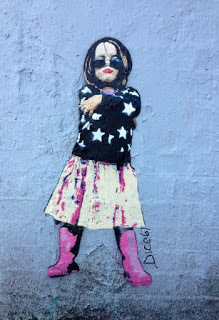
A cool white, wintry light glazed the buildings on the highest hill: Will’s memorial, the unsightly chimney from the hospital, the modernist cathedral in Clifton. The jumble of styles and eras lent the city the semblance of a medieval Roman town. Laura drove the long way round, up past the Clifton Suspension Bridge, strung like an a engineer’s dream over a river sinking into the mud. Leigh Woods was on the far side, the trees dark, bereft of leaves, clawing at the sky.
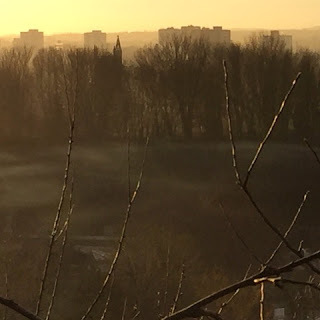
What actually happened was that I ended up placing most of the action in a tiny urban nature reserve. In Bone by Bone Laura, newly divorced and relocated to Bristol, learns that her nine-year-old daughter, Autumn, is being bullied at her primary school. When no one takes Laura seriously, she tries to protect Autumn from the bully - with devastating consequences for her and her child. Bone by Bone is set in a mad mixture of two areas in Bristol: Montpelier and St Werburghs. For those who know Bristol intimately, it’ll be obvious that some of my descriptions are realistic but that I’ve shunted whole sections of the landscape around to make my plot work!The lane led to a miniature nature reserve created between the intersection of three railway tracks. You reached Narroways nature reserve by crossing a thin bridge suspended over the lines. It had high corrugated metal barriers on either side that were scrawled with neon-bright graffiti, and it was encased by wire bars, so that the whole bridge was like a cage.
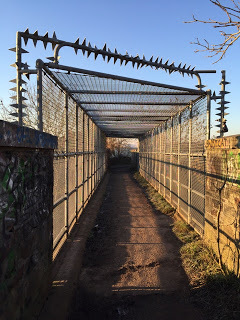
Narroways nature reserve is where much of the scary stuff happens. In real life, I frequently walk through it, not feeling frightened at all, hoping to catch a glimpse of the wildlife that lives there, from pipistrelles to foxes; wild flowers such as bush vetch and bird’s foot trefoil abound; magpies arrow across the sky and dunnocks scuttle about in the old orchard. In summer you see butterflies, such as the marbled white and clouded silver - which is pretty good going when we’re a stone’s throw away from Tesco Express! The whole area has a rich history, from the watercress farming that took place in the stream below, to the murder of Ada James in 1913 on the path that runs up the side of the reserve. It later became known as Cut Throat Lane. St Werburghs has a fascinating history too: the original saint was an Anglo-Saxon princess who became a nun and apparently restored a goose to life!
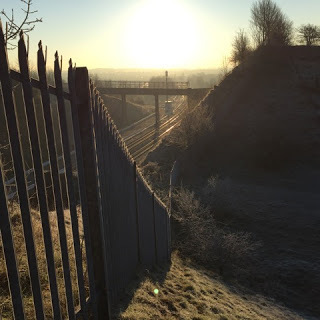
Bone by Bone takes place over ten days in autumn, covering Halloween and Bonfire Night. The typical Bristolian weather: grey, drizzly, damp, icy, combined with ghoulishly carved pumpkins in the allotments, all add to the heightened feelings of unease, as Laura and Autumn’s lives spiral increasingly out of control. What I like about this area, particularly in the early days of autumn, in terms of plotting a thriller, is that you have all the elements that make us tense: a city where we don’t know our neighbours and can feel alone and vulnerable in spite of the numbers of people around, as well as tapping into what frightens us as human beings - darkness, woods, strangers. It’s the juxtaposition of urban and wilderness that I find inspiring:
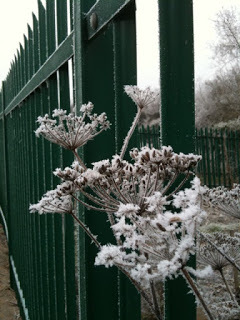
The lines began to sing, a shrill, electric song, and then the cacophony of the train roared out of the darkness. The carriages were almost empty and painfully bright as they hurtled along the tracks to the heart of the city. In the fleeting light she saw the meadow, dotted with stunted hawthorns, their twisted limbs dense with red berries, and then a shape: achingly familiar, child-sized, shockingly still.
Published on March 07, 2016 00:42
March 5, 2016
Breaking News
Published on March 05, 2016 08:32
March 1, 2016
Review - Process by Sarah Stodola
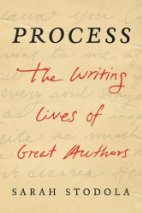
Process by Sarah Stodola
I find it interesting that this book started out as a method of procrastinating from writing. Stodola sought out other writer's processes whilst avoiding working. If you've ever wondered at the writing habits of George Orwell, Vladimir Nabokov, David Foster Wallace, Virginia Wolf and many many more - then this is the book for you.
Divided into sections such as Nine to Fivers (obvious) such as Kafka and autodidacts (I think that'd be most writers surely?) such as George Orwell and Winging it such as Salman Rushdie.
This is interesting for the sheer variety of approaches to writing as a career but I guess it's a fairly niche interest. Luckily I am well into that niche being a bit of a literature nerd.
I listened to the audio version of this book narrated by Andi Arndt who did bring it to life. However at the end of each chapter Stodola didn't really end with a hook or an obvious "and this is finished" and Arndt just stops so it took me a while to get used to this (as I was listening a chapter at a time)
If you're at all interested in the writing live of your favourite writers then you should check this out
Published on March 01, 2016 05:14
February 29, 2016
Reviews - Book of Apex & Azanian Bridges
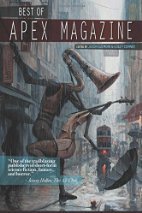
Best of Apex Magazine Volume 1
Edited by Lesley Connor & Jason Sizemore
I received this book in return for a review
First of all - what a cover! I love this, and it really sets an expectation of quality that I'm glad to say was more than met by the stories inside. Usually with a collection of stories that are unthemed and from different authors there would be an unevenness and a hit and miss quality. This wasn't the case here - although not all the stories were to my taste there were certainly no bad ones. Indeed as a writer there were plenty of - 'I wish I'd written something like this' moments.
It was also very nice to read a few new authors, although there were also some old favourites (of mine) like Genevieve Valentine, Ken Liu and Rachel Swirsky all of whom didn't disappoint. Especially Valentine's story - Armless maidens of the American Midwest which was one of the stand out tales of the anthology.
Other tales that I especially liked were: L’esprit de L’escalier by Peter M. Ball which is a striking tale and one that stays with you for days, telling of a grieving man who decides to descend an endless stairway; Remember Day by Sarah Pinsker in which one day a year a veil is lifted from those who have voluntarily given up their memories of a horrible war and Advertising at the End of the World by Keffy R.M. Kehrli which managed to be both melancholy and creepy at the same time.
Overall I can give this a hearty recommendation. Maybe not all the stories will hit the right spots for you, but if you don't read it you'll be missing out on some excellent examples of the speculative.
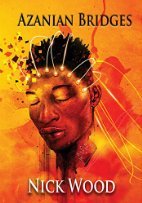
Azanian Bridges
By Nick Wood
I received this book in return for a review
Imagine what South Africa would be like now, if Mandela hadn't been released, if Apartheid didn't end, and where someone invents a device that allows for direct exchange of memories, thoughts and feelings.
We follow two characters - Martin, a white psychologist and Sibusiso, a black man suffering from PTSD after seeing a friend killed in a demonstration where the police use live rounds to disperse the crowd.
Martin, and a friend, have invented the device the plot revolves around. Despite the ethical quandary it poses he uses it to treat Sibusiso and risks his job, and after a warning from the secret police, his freedom.
There is the touch of a thriller as the box becomes an object that different groups desire, for different purposes. The ANC, the secret police etc. Both Martin and Sibusiso are thrown headlong into confronting the inherent nature of such an apartheid state - from different ends, white privilege and black oppression.
There's more than a hint of Orwell's 1984 here, especially with the fabled Room 619 (from which people do not return) although it is brought bang up to date and, as is pointed out in Imaginary cities (which has changed my perspective of dystopias permanently), each dystopia also contains someone's utopia and vice versa.
This is an intelligent book that manages to transcend the thriller style plot to be genuinely thought-provoking. Which is what speculative fiction should be.
Recommended.
Published on February 29, 2016 01:29
February 17, 2016
Guest post from David Hulegaard
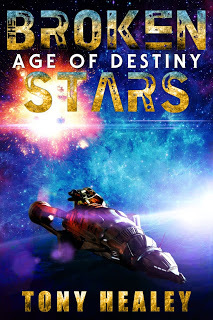
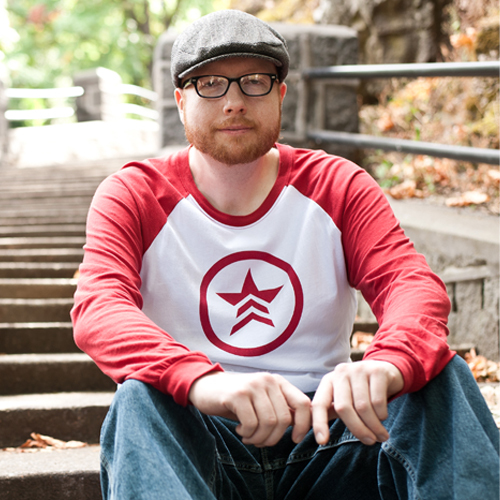
With encouragement from friends and family, David K. Hulegaard wrote his first novel in 2010, and has cut a swath through Sci-Fi and Fantasy ever since. Lauded for his ability to create complex, meaningful characters, David’s Noble trilogy takes readers on an emotional journey that has garnered comparisons to the works of Philip K. Dick and Stephen King.David lives in Port Townsend, Washington with his wife Jennie, and their banana-obsessed Welsh Terrier Tobi. In his spare time, he enjoys video games, professional wrestling, and photography.David dropped in to talk about his new book - Planet of IceLearn more about David and his books at www.davidhulegaard.com , and follow him on Twitter to chat.
Constructing a Planet of Ice
When a mysterious message prompts Delta to leave the crew unexpectedly, Max, Kort and K1RB pursue her to a mining colony on Quaris - a distant planet with a seedy reputation. To find Delta, the team must traverse a harsh, unforgiving environment; face certain death at the hands of murderous mercenaries; and uncover the powerful secrets hidden beneath the planet's frozen crust . . .
I consider myself fortunate to count author Tony Healey among my friends. We both entered the literary fray around the same time, and clicked right away. Not only is he a swell guy on a personal level, but he’s also one helluva storyteller, and I enjoy his work immensely.
We’d always wanted to work on a project together, but without fail, something would come up and derail our progress. Finally, in 2015, we teamed up and published two volumes of an innovative new series called Playlist : collections of short stories inspired by our favorite music.
Not long afterward, Tony presented another opportunity for us to collaborate, only this time he raised the stakes. He needed someone to take on the second book of his critically-acclaimed Broken Stars series, and in short order.
I spent a weekend reading Age of Destiny (the incredible first book in the series) cover to cover twice. With a head full of ideas, I plotted an outline of where I saw the story going next, and sent it to Tony for approval. After a few minor changes, he gave me his blessing, and put me to work on Planet of Ice.
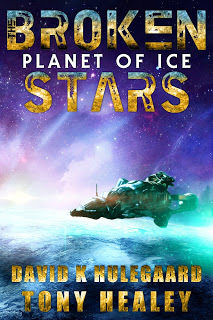
Although I was intimidated to take the reins from someone as gifted as Tony, I was equally excited to play in his sandbox. He’d created such an intriguing universe with Age of Destiny, filled with mystery, action, suspense, and very likable characters. Oh, and did I mention aliens and space travel? My inner geek was tingling.
My goal with Planet of Ice was to expand upon the fantastic groundwork Tony laid with Age of Destiny. He established a solid blueprint around Max, the main protagonist, so I wanted to build off that by examining his crew and exploring their team dynamic a bit deeper.
Delta is one such character Tony introduced in Age of Destiny, and I loved her instantly. She’s a real bad ass with a “take no crap” attitude, and joins the team with reluctance during a fight-or-flight situation. Although we learn a bit about her criminal past in the first book, I felt as though we’d only scratched the surface of her character. With that in mind, I developed Planet of Ice around the consequences of her involvement. Ghosts from her past come back to haunt her, and the boundaries of her friendship with Max are tested.
Focusing on Delta was also important to me because I feel as though strong female characters are at a premium in the sci-fi genre, and that’s a shame. But she’s not just strong. She’s fearless, funny, smart, resourceful, and crafty. She’s not a role model by any stretch of the imagination, but when push comes to shove, she’s definitely someone you’d want to have your back.
If you like action-packed sci-fi, The Broken Stars series is right up your alley. But don’t just take my word for it:
“This book has plenty of non-stop action, character development, suspense, and vivid world building.” – 5-star review on Amazon
Begin Max’s adventure across the stars in Age of Destiny .
Continue his journey in Planet of Ice .
Published on February 17, 2016 02:40
February 16, 2016
Some quick reviews
What did the beginning of the year bring us reading wise?
Apart from Toby Litt & NewCon Press titles that is...
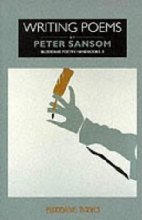
Writing Poems (Bloodaxe Poetry Handbook)
This was more a 'why write poems' and 'how to write better poems' than a basic primer. This is not a one stop shop if you want to learn how to write poetry (or indeed write better poetry) and fails as a primer, assuming that you have the basics already. It also seems to assume that the reader will be teaching others to write poetry. Still it's a book that would be handy to you if you ever did decide to write poetry, but I can't help thinking that there are better out there. This does get a vast amount of great reviews, so perhaps there aren't?
Open to recommendations on writing poetry books...
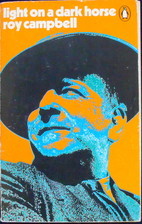
Light on a Dark Horse by Roy Campbell
Campbell is like the poetic version of Hemmingway - he was a bullfighter, s deep sea fisherman, he fought in the Spanish civil war (on the side of Franco) and was fully immersed in 1920'2 & 30's literati society. He was born in South Africa and this book (the first in a two book anthology) covers his early childhood and early literary success. I would have like to learn more about his exploits in Spain and WW2, but that would mean tracking down volume 2, and I'm not sure I can be bothered.
Campbell is an interesting character but very not PC (surprise!) and pretty right wing. I've not read any of his poetry (which I think I should, just because I no know lots about his life) but expect it to be just as dismissive of leftish leanings.
It's an interesting read despite the dodgy politics, good old fashioned racism and misogyny because it does conjure a lost world of pre-world war two (he tried to sign up to fight in WW1 but was discovered to be too young).
I mainly got this because of As I walked out one Midsummer by Laurie Lee, where Lee meets the poet, who makes a big impression on him. The introduction to this book is by Lee.
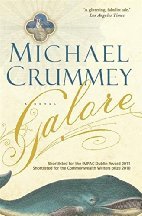
Galore by Michael Crummay
A whale is washed up dead on the Newfoundland coast. There is a man in the belly. He is alive. He has miraculous powers. There is a sprawling family saga between the Sellers and Devine families. When I got to the end of part one I put it down and wasn't inspired to pick it back up again. i don't know how it ends and have no desire to find out. The writing wasn't bad as such, but the characters were studiously quirky and the type of family saga with no real plot didn't really do it for me.
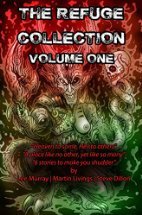
The Refuge collection volume one
This is a collection of short stories set in the strange town of Refuge (where everything is clearly NOT alright) with more than a soupcon of horror. All the proceeds go to refugee charities and therefore it's worth supporting for that. Luckily it's also a great little collection where each story adds layers to the town and the recurring characters and with there being several more volumes coming I'll be following along. Full disclosure - I'll be writing a story for a later volume so there's that too.

Wired for story by Lisa Cron
Our brains are wired for story - it is a result of our evolution and why we are so successful as a species (if you believe that - and we aren't the equivalent of yeast about to drown in our own waste... ) and this book uses the science of psychology to highlight what good stories do. It is the usual mix of storytelling advice wrapped in a pop-psychology jacket. It is actually a good writing advice book. But it's not the only one out there and you may get on with another better. Anyone who tells you they have THE answer when it comes to storytelling is either mistaken or trying to sell you something...
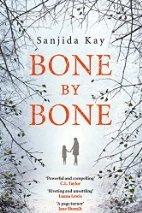
Bone by bone by Sanjida Kay
(More on this elsewhere - the launch is soon and Sanjida will be providing a guest blog)
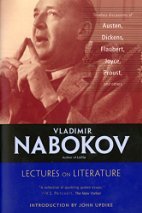
Lectures on literature by Nabokov
I was so looking forward to this book. I have huge respect for Nabokov as a writer and looked forward to getting his insights into several classics. Sadly the lectures seemed to mostly be summaries of the books that were set texts for the course. Having struggled through Mansfield Park I flipped through the lectures on Bleak House and although there are gems in there (no doubt) they were buried in the summary. It's an odd mix, fully expecting the student (reader) to have read the text (which I confess I ddin't) but then spends around 80% of the lecture summarising what happened chapter by chapter and the other 20% is mostly detail about the period...

A slip of the keyboard by Terry Pratchett
Terry Pratchett wrote numerous essays over the years, many of which were published in various newspapers. This book collects them together. They are, as you'd expect, amusing, erudite and eloquent. I sat down to read "a couple of essays" and before I knew it I'd read most of the book. This is an essential purchase for Pratchett fans and also well-worth buying if you are an aspiring writer (lots of insight into being a writer).
I found that for the last few chapters, as pTerry struggles with Alzheimers and the ethics of choosing your own way to die were just heartbreaking. For me (and until fairly recently I assumed everyone else but several people have disabused me of the notion) the fear olosing your mind is much greater than that of physical injury and the thought that you'd lose it by degrees knowing that you were losing it, and not being able to do anything about it, or end it whilst you were still you, fills me with horror. That it happened to someone like pTerry is a tragedy, and I did find that there was something in my eye as I read through some of those final chapters. In 2013 at World FantasyCon I had the chance to go and see pTerry in public for what was one of the last times. I decided that I didn't want to remember him struggling under the weight of the terrible disease that had took hold of him. Others that did said it was like watching a dragon die.
I did a tribute to Terry Pratchett for Far Horizons magazine which can be seen in our anniversary issue last April available here

What If? by Randall Munroe (XKCD)
The guy who draws XKCD has a blog where he allows people to ask stupid questions about science (he's a physics graduate & self-proclaimed science geek) which he'll try to answer with serious science. The questions are in the style of - "what would happen if the sun went out" or "what if i took a swim in a spent nuclear fuel pool." amongst many many others.
Munroe does both an admirable job of explaining the science simplistically and also give entertaining answers, with amusing illustrations. This is a bit of a dipping into book and ideal for the mini-library by the side of the toilet (what do you mean you don't have one?)
Recommended
Apart from Toby Litt & NewCon Press titles that is...

Writing Poems (Bloodaxe Poetry Handbook)
This was more a 'why write poems' and 'how to write better poems' than a basic primer. This is not a one stop shop if you want to learn how to write poetry (or indeed write better poetry) and fails as a primer, assuming that you have the basics already. It also seems to assume that the reader will be teaching others to write poetry. Still it's a book that would be handy to you if you ever did decide to write poetry, but I can't help thinking that there are better out there. This does get a vast amount of great reviews, so perhaps there aren't?
Open to recommendations on writing poetry books...

Light on a Dark Horse by Roy Campbell
Campbell is like the poetic version of Hemmingway - he was a bullfighter, s deep sea fisherman, he fought in the Spanish civil war (on the side of Franco) and was fully immersed in 1920'2 & 30's literati society. He was born in South Africa and this book (the first in a two book anthology) covers his early childhood and early literary success. I would have like to learn more about his exploits in Spain and WW2, but that would mean tracking down volume 2, and I'm not sure I can be bothered.
Campbell is an interesting character but very not PC (surprise!) and pretty right wing. I've not read any of his poetry (which I think I should, just because I no know lots about his life) but expect it to be just as dismissive of leftish leanings.
It's an interesting read despite the dodgy politics, good old fashioned racism and misogyny because it does conjure a lost world of pre-world war two (he tried to sign up to fight in WW1 but was discovered to be too young).
I mainly got this because of As I walked out one Midsummer by Laurie Lee, where Lee meets the poet, who makes a big impression on him. The introduction to this book is by Lee.

Galore by Michael Crummay
A whale is washed up dead on the Newfoundland coast. There is a man in the belly. He is alive. He has miraculous powers. There is a sprawling family saga between the Sellers and Devine families. When I got to the end of part one I put it down and wasn't inspired to pick it back up again. i don't know how it ends and have no desire to find out. The writing wasn't bad as such, but the characters were studiously quirky and the type of family saga with no real plot didn't really do it for me.

The Refuge collection volume one
This is a collection of short stories set in the strange town of Refuge (where everything is clearly NOT alright) with more than a soupcon of horror. All the proceeds go to refugee charities and therefore it's worth supporting for that. Luckily it's also a great little collection where each story adds layers to the town and the recurring characters and with there being several more volumes coming I'll be following along. Full disclosure - I'll be writing a story for a later volume so there's that too.

Wired for story by Lisa Cron
Our brains are wired for story - it is a result of our evolution and why we are so successful as a species (if you believe that - and we aren't the equivalent of yeast about to drown in our own waste... ) and this book uses the science of psychology to highlight what good stories do. It is the usual mix of storytelling advice wrapped in a pop-psychology jacket. It is actually a good writing advice book. But it's not the only one out there and you may get on with another better. Anyone who tells you they have THE answer when it comes to storytelling is either mistaken or trying to sell you something...

Bone by bone by Sanjida Kay
(More on this elsewhere - the launch is soon and Sanjida will be providing a guest blog)

Lectures on literature by Nabokov
I was so looking forward to this book. I have huge respect for Nabokov as a writer and looked forward to getting his insights into several classics. Sadly the lectures seemed to mostly be summaries of the books that were set texts for the course. Having struggled through Mansfield Park I flipped through the lectures on Bleak House and although there are gems in there (no doubt) they were buried in the summary. It's an odd mix, fully expecting the student (reader) to have read the text (which I confess I ddin't) but then spends around 80% of the lecture summarising what happened chapter by chapter and the other 20% is mostly detail about the period...

A slip of the keyboard by Terry Pratchett
Terry Pratchett wrote numerous essays over the years, many of which were published in various newspapers. This book collects them together. They are, as you'd expect, amusing, erudite and eloquent. I sat down to read "a couple of essays" and before I knew it I'd read most of the book. This is an essential purchase for Pratchett fans and also well-worth buying if you are an aspiring writer (lots of insight into being a writer).
I found that for the last few chapters, as pTerry struggles with Alzheimers and the ethics of choosing your own way to die were just heartbreaking. For me (and until fairly recently I assumed everyone else but several people have disabused me of the notion) the fear olosing your mind is much greater than that of physical injury and the thought that you'd lose it by degrees knowing that you were losing it, and not being able to do anything about it, or end it whilst you were still you, fills me with horror. That it happened to someone like pTerry is a tragedy, and I did find that there was something in my eye as I read through some of those final chapters. In 2013 at World FantasyCon I had the chance to go and see pTerry in public for what was one of the last times. I decided that I didn't want to remember him struggling under the weight of the terrible disease that had took hold of him. Others that did said it was like watching a dragon die.
I did a tribute to Terry Pratchett for Far Horizons magazine which can be seen in our anniversary issue last April available here

What If? by Randall Munroe (XKCD)
The guy who draws XKCD has a blog where he allows people to ask stupid questions about science (he's a physics graduate & self-proclaimed science geek) which he'll try to answer with serious science. The questions are in the style of - "what would happen if the sun went out" or "what if i took a swim in a spent nuclear fuel pool." amongst many many others.
Munroe does both an admirable job of explaining the science simplistically and also give entertaining answers, with amusing illustrations. This is a bit of a dipping into book and ideal for the mini-library by the side of the toilet (what do you mean you don't have one?)
Recommended
Published on February 16, 2016 06:49
What is Moozvine?
There's a new publishing platform over here:
Moozvine is a crowdfunding platform where users can download and read straight away, without needing to sign-up or create an account.
Funding is currently open for Alex Shvartsman’s humourous, science fantasy story, High Tech Fairies and the Pandora Perplexity, a sequel to the story Explaining Cthulhu to Grandma, which is already available for free on the site.
We asked our friends at Publishing Push what it was all about -

It’s not often something completely new comes along to shake up an established industry. Moozvine.com is doing just that with their innovative model for funding and releasing ebooks under a Creative Commons licence.
What that means for you is that you can go there and download any book that has been released completely for free. You can read the books, download them and even share them with your friends and it’s all completely legal.
Why would the authors let you do that? The way it works is that when a book is first put up there, it has a two week window during which the public can pledge money to enable the release. If the book’s release threshold is met the money is paid to the author and then anyone can get the book! After a book is released, the public can continue to support the authors they love by paying any amount they want whenever they want.
Right now they are focused on Sci Fi and have some amazing short stories and novellas from some of the big names in Sci Fi at the moment, including many Hugo and Nebula award winners.
Go over there and read some of their stuff. And while you are there, why not support their currently funding story with a few dollars!
Moozvine is a crowdfunding platform where users can download and read straight away, without needing to sign-up or create an account.
Funding is currently open for Alex Shvartsman’s humourous, science fantasy story, High Tech Fairies and the Pandora Perplexity, a sequel to the story Explaining Cthulhu to Grandma, which is already available for free on the site.
We asked our friends at Publishing Push what it was all about -

It’s not often something completely new comes along to shake up an established industry. Moozvine.com is doing just that with their innovative model for funding and releasing ebooks under a Creative Commons licence.
What that means for you is that you can go there and download any book that has been released completely for free. You can read the books, download them and even share them with your friends and it’s all completely legal.
Why would the authors let you do that? The way it works is that when a book is first put up there, it has a two week window during which the public can pledge money to enable the release. If the book’s release threshold is met the money is paid to the author and then anyone can get the book! After a book is released, the public can continue to support the authors they love by paying any amount they want whenever they want.
Right now they are focused on Sci Fi and have some amazing short stories and novellas from some of the big names in Sci Fi at the moment, including many Hugo and Nebula award winners.
Go over there and read some of their stuff. And while you are there, why not support their currently funding story with a few dollars!
Published on February 16, 2016 01:10
February 10, 2016
Interview with Toby Litt
Toby Litt is best-known for writing his books – from Adventures in Capitalism to (so far) Life-Like – in alphabetical order; he is currently working on P.
[image error]
(Toby Litt at Bristol Festival of Literature. Photo courtesy of Paul Bullivant)
Why did you choose to call your collection of essays Mutants?
I was thinking of calling it Mutoid Attack!!! That was the name of a game me and my gang used to play, when we were about nine or ten years old.
The real reason is that I was asked to write something about Carlos Labbé, a Chilean writer. This was for Granta online. It was one of those occasions where a little commission, a few hundred words, forced me to formalize something that had been inchoate for a long while. I was very direct in my language.
“I like fiction that seems to reinvent itself as it goes along—to change not only its rules but also the premises on which those rules are based. This is a fiction that goes beyond metamorphosis and becomes, instead, a kind of seething, perpetual mutation. It doesn’t start from a state of generic-genetic purity; it was hybrid to begin with. Each stage of its development is one of mutation from mutation, outgrowth from outgrowth. And yet, when it reaches an end, dies or slides off out of sight towards further incarnations, it is possible to discern that this creature-of-literature had a consistent form—and an indwelling set of premises that weren’t discernible before.”
Afterwards, I realized this explained a lot about the kind of writing that I see myself as doing, and why it doesn’t always meet with comprehension.
Do you have a set writing process, if so what is it? Is process important?
The simplest answer is no. There are certain things I return to repeatedly – certain kinds of notebook for instance – but that’s because they’re the best ones I’ve found; if I found better, I’d switch. I am superstitious, but the means I use to write change with each book. However, I don’t like to think of it as ‘process’. Although I teach writing, and have explanations for lots of technical aspects of prose-making, the moments when it goes well are very mysterious.
Where do you stand on the axiom "write every day"? (& please explain why)
I stand here: If you have to force yourself to write, you’re not (my kind of) writer; if you have to force yourself not to write, I greet you as a fellow shirker of life. Whenever I can sneak off to work, you will not find me with other people. This causes problems frequently.
Do you prefer the long or short form? How do you feel about Flash Fiction?
For some reason, perhaps because it’s what you can produce in half a day, I have settled to a story length of between 2,500 and 3,000 words. I would prefer these stories to be longer, but they seem to fit into around ten to twelve pages.
Flash Fiction doesn’t resonate with me. I will write something that’s a sentence long, but I’ll just think, ‘That’s all there is. Why isn’t there more? Because anything more would be crap.’ Usually, I don’t make an attempt to publish or circulate sentence-long things. They stay in the notebooks.
What did you learn about writing from writing comics?
That writing comics is hard. That comics are a much younger, freer form (in terms of using a consistent point of view) than novels or short stories. (This may seem a minor point, but I realized that novels and short stories are extremely rule-bound as far as point of view goes.) That it is useful for prose writers to think about writing on multiple levels simultaneously. That the masters of comics writing are masters of syncopation. That writers for comics are part of a Fordist production line where you do your bit, pass it on. That comics readers are some of the best, most passionate, most critical, that a writer could find.
And a similar question - what did you learn about writing by collaborating on an opera?
Ah, well, I think comics and opera libretti are very similar forms. BIG WRITING. With a comic, every reader has to hit each beat at the same time. A spread out revelation is a flubbed revelation. Look at Brian K. Vaughan’s writing for Saga. When he does a BOOM, everyone gets it. Similarly, with an opera, everyone in the auditorium should be at the same resonant frequency. It’s ‘If you have tears, prepare to shed them now.’ That’s my take on the libretto form: it’s the poetic triumph of the bloody obvious. “I am full of grief – I am anguished.” That would be terrible in a short story. Leave subtlety to the composer. Make your vowels singable and don’t car crash your consonants.
Which piece of your own writing are you most proud of? and why?
I have just submitted something new, and long, to an editor. Right now, I hate everything I’ve done, and wish I was another writer entirely. None of it has done anything that really seems important. Feeling like this is what happens between books. I am glad I wrote some of the lyrics that Emily Hall has set – ‘At the Edge of the Field’, ‘A Field of Snow’, ‘Waltz’. If you were to press me about prose, I’d say either the opening of Journey into Space, or all of deadkidsongs, or the story ‘The Hare’.
What are you going to do once you've reached the end of the alphabet (with book titles I mean - rather than any sort of existential word hoard crisis)
Word hoard is a wonderful image; Anglo-Saxon, no? That would make me a great Smaugesque dragon, sitting on top of the glistering pile, wanting more.
Answer: I have a plan. I have only told one person that plan. You are not that person.
Are you particularly influenced by any writers? If so who and why? If not why?
Many, many writers; constantly. At the moment, consciously, Osip Mandelstam – ‘Journey to Armenia’ and ‘Fourth Prose’; Claire-Louise Bennett, Pond. More generally, Henry James, Virginia Woolf, J.G.Ballard, David Foster Wallace, Franz Kafka, Muriel Spark, Samuel Beckett.
I read what they do and see how intensely other it can be. Because they have reached the point of perceiving a world that isn’t common. They mutate language in a way that’s enviable, necessary, and sets me off to try again.
But I’m also equally influenced by musicians and visual artists.
In one sentence what is your best piece of advice for new writers?
Enjoy being a new writer; value energy over expertise – don’t be reasonable.
You must be a mutant.
[image error]
(Toby Litt at Bristol Festival of Literature. Photo courtesy of Paul Bullivant)
Why did you choose to call your collection of essays Mutants?
I was thinking of calling it Mutoid Attack!!! That was the name of a game me and my gang used to play, when we were about nine or ten years old.
The real reason is that I was asked to write something about Carlos Labbé, a Chilean writer. This was for Granta online. It was one of those occasions where a little commission, a few hundred words, forced me to formalize something that had been inchoate for a long while. I was very direct in my language.
“I like fiction that seems to reinvent itself as it goes along—to change not only its rules but also the premises on which those rules are based. This is a fiction that goes beyond metamorphosis and becomes, instead, a kind of seething, perpetual mutation. It doesn’t start from a state of generic-genetic purity; it was hybrid to begin with. Each stage of its development is one of mutation from mutation, outgrowth from outgrowth. And yet, when it reaches an end, dies or slides off out of sight towards further incarnations, it is possible to discern that this creature-of-literature had a consistent form—and an indwelling set of premises that weren’t discernible before.”
Afterwards, I realized this explained a lot about the kind of writing that I see myself as doing, and why it doesn’t always meet with comprehension.
Do you have a set writing process, if so what is it? Is process important?
The simplest answer is no. There are certain things I return to repeatedly – certain kinds of notebook for instance – but that’s because they’re the best ones I’ve found; if I found better, I’d switch. I am superstitious, but the means I use to write change with each book. However, I don’t like to think of it as ‘process’. Although I teach writing, and have explanations for lots of technical aspects of prose-making, the moments when it goes well are very mysterious.
Where do you stand on the axiom "write every day"? (& please explain why)
I stand here: If you have to force yourself to write, you’re not (my kind of) writer; if you have to force yourself not to write, I greet you as a fellow shirker of life. Whenever I can sneak off to work, you will not find me with other people. This causes problems frequently.
Do you prefer the long or short form? How do you feel about Flash Fiction?
For some reason, perhaps because it’s what you can produce in half a day, I have settled to a story length of between 2,500 and 3,000 words. I would prefer these stories to be longer, but they seem to fit into around ten to twelve pages.
Flash Fiction doesn’t resonate with me. I will write something that’s a sentence long, but I’ll just think, ‘That’s all there is. Why isn’t there more? Because anything more would be crap.’ Usually, I don’t make an attempt to publish or circulate sentence-long things. They stay in the notebooks.
What did you learn about writing from writing comics?
That writing comics is hard. That comics are a much younger, freer form (in terms of using a consistent point of view) than novels or short stories. (This may seem a minor point, but I realized that novels and short stories are extremely rule-bound as far as point of view goes.) That it is useful for prose writers to think about writing on multiple levels simultaneously. That the masters of comics writing are masters of syncopation. That writers for comics are part of a Fordist production line where you do your bit, pass it on. That comics readers are some of the best, most passionate, most critical, that a writer could find.
And a similar question - what did you learn about writing by collaborating on an opera?
Ah, well, I think comics and opera libretti are very similar forms. BIG WRITING. With a comic, every reader has to hit each beat at the same time. A spread out revelation is a flubbed revelation. Look at Brian K. Vaughan’s writing for Saga. When he does a BOOM, everyone gets it. Similarly, with an opera, everyone in the auditorium should be at the same resonant frequency. It’s ‘If you have tears, prepare to shed them now.’ That’s my take on the libretto form: it’s the poetic triumph of the bloody obvious. “I am full of grief – I am anguished.” That would be terrible in a short story. Leave subtlety to the composer. Make your vowels singable and don’t car crash your consonants.
Which piece of your own writing are you most proud of? and why?
I have just submitted something new, and long, to an editor. Right now, I hate everything I’ve done, and wish I was another writer entirely. None of it has done anything that really seems important. Feeling like this is what happens between books. I am glad I wrote some of the lyrics that Emily Hall has set – ‘At the Edge of the Field’, ‘A Field of Snow’, ‘Waltz’. If you were to press me about prose, I’d say either the opening of Journey into Space, or all of deadkidsongs, or the story ‘The Hare’.
What are you going to do once you've reached the end of the alphabet (with book titles I mean - rather than any sort of existential word hoard crisis)
Word hoard is a wonderful image; Anglo-Saxon, no? That would make me a great Smaugesque dragon, sitting on top of the glistering pile, wanting more.
Answer: I have a plan. I have only told one person that plan. You are not that person.
Are you particularly influenced by any writers? If so who and why? If not why?
Many, many writers; constantly. At the moment, consciously, Osip Mandelstam – ‘Journey to Armenia’ and ‘Fourth Prose’; Claire-Louise Bennett, Pond. More generally, Henry James, Virginia Woolf, J.G.Ballard, David Foster Wallace, Franz Kafka, Muriel Spark, Samuel Beckett.
I read what they do and see how intensely other it can be. Because they have reached the point of perceiving a world that isn’t common. They mutate language in a way that’s enviable, necessary, and sets me off to try again.
But I’m also equally influenced by musicians and visual artists.
In one sentence what is your best piece of advice for new writers?
Enjoy being a new writer; value energy over expertise – don’t be reasonable.
You must be a mutant.
Published on February 10, 2016 00:17
Pete Sutton's Blog
- Pete Sutton's profile
- 14 followers
Pete Sutton isn't a Goodreads Author
(yet),
but they
do have a blog,
so here are some recent posts imported from
their feed.





